Gerano is located amidst extensive chestnut forests, overlooking the plain crossed by the Giovenzano river. This tributary of the Aniene is enclosed between the Ruffi mountains and the Guadagnolo massif. The village lies on a tuffaceous terrain similar to the Mountain of Cranes (Gherania) in Greece, from which it takes its name, Gerano.
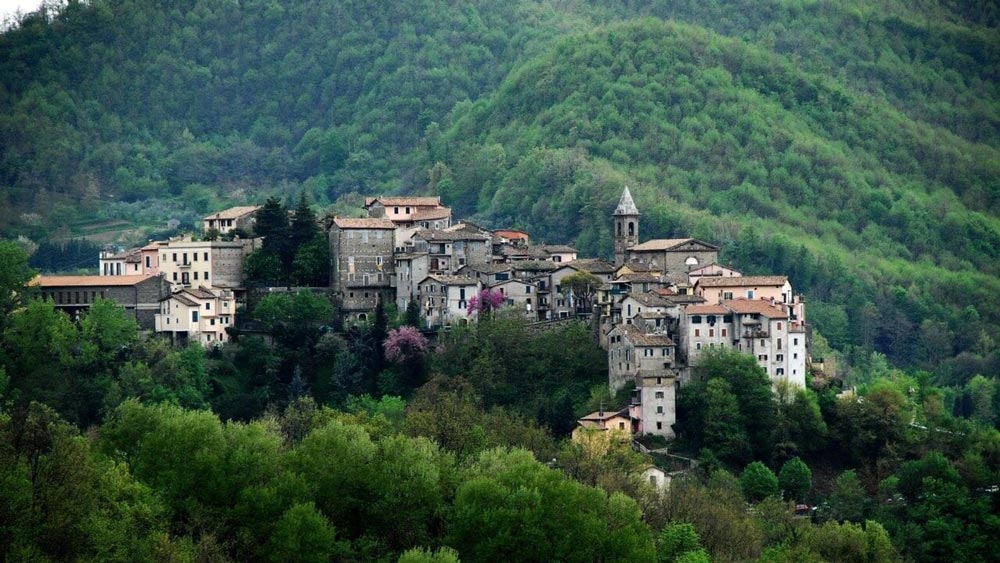
The Giovenzano valley has been intensely contested by various peoples since antiquity. There are numerous testimonies of colonisation by the Romans, such as the ruins of villas, the remains of Trebula Suffenas, the Fortuna Pass, polygonal walls and dislocated Roman walls.
The historical centre arose between the 9th and 10th centuries. It is a maze of narrow streets that climb from Porta Amato, Porta Maggiore and Porta Cancello to converge towards the highest part of the old town. Near Porta Amato, stands the Church of San Lorenzo Martire, dating back to the year 1000 and renovated in the late 18th century. The ‘Martyrdom of San Lorenzo’ by the painter Domenico Fiorentino triumphs here.
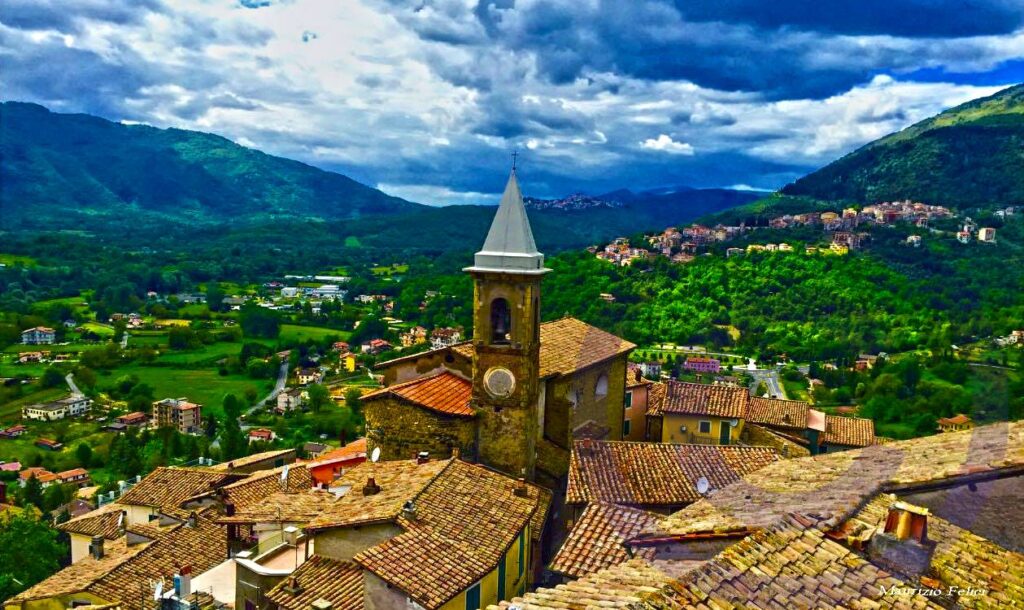
panorama di Gerano – foto Facebook @ Comune di Gerano
The Church of Santa Maria Assunta dates back to the 10th century and is located in the centre of the village, with its 25-metre high bell tower and four bells in Gothic style. It was extended during the first half of the 19th century under the meticulous supervision of architect Valadier. Admire the Fontana di Ciocio, an ancient Roman fountain from the 2nd century. The 14th century Palazzo di Corte was the local court and municipal duty. In the small square in front of it, public auctions were held using the candle lighting method.
Not far from Gerano stands the 6th-century Church of St Anatolia. Here, every year in July, secularity and religiosity merge during the festival in honour of Saint Anatolia, Patron Saint of Gerano. A centuries-old fair of goods and livestock takes place, based on the exchange of agricultural and handicraft products, and numerous pilgrims and nomads gather in the meadow in front of the church to celebrate with dancing and singing at night.
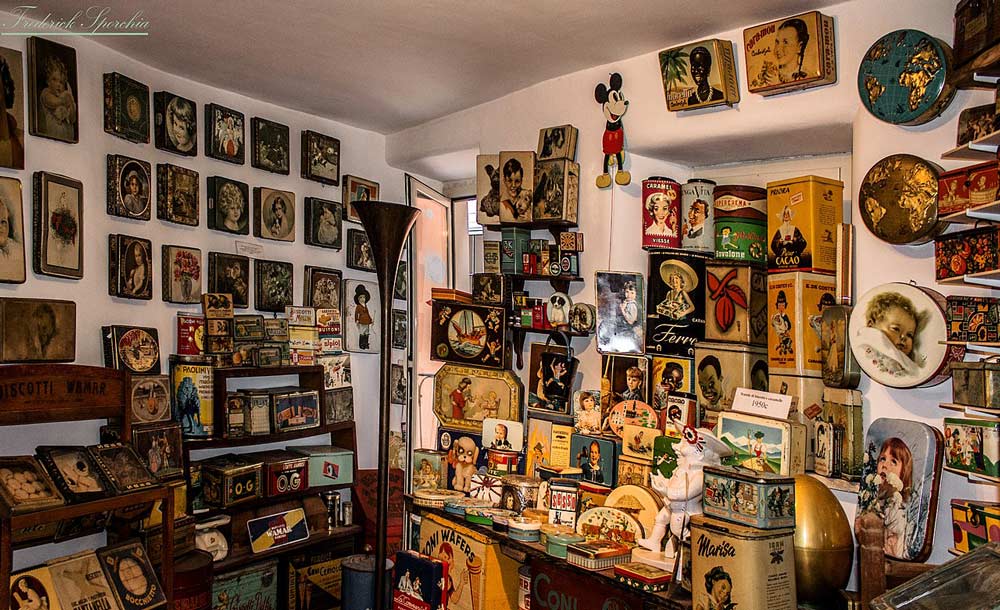
picture of @Frederick Sporchia
Not to be missed in Gerano is the Casa delle Antiche Scatole di Latta, a magical place that has the scent of memory. It is an exhibition born by chance from the passion of its creator, Marina Durand De La Penne. She managed to collect more than 1,000 tin boxes, all Italian and produced between 1890 and 1950. Her dream was to preserve, promote and valorise the cultural heritage preserved in these simple, everyday period objects.
Strozzapreti is a typical first course whose name derives from the particular dough. It is hard and sticky and once required wine to be swallowed but the clergy could not drink it. This is how they came to be called strozzapreti. Traditionally, they are seasoned with pistecchia, or tomato, garlic, oil, parsley and anchovies. Also try the gnocche pelose, a type of tagliatelle topped with porcini mushrooms and sausages. Then there are the maccarunacci co’gli cici, a special cut of pasta served with chickpea sauce and bacon. Finally, the sweet ciammillitti de magru, dry biscuits with hazelnuts, sugar, white wine, olive oil, flour and salt.
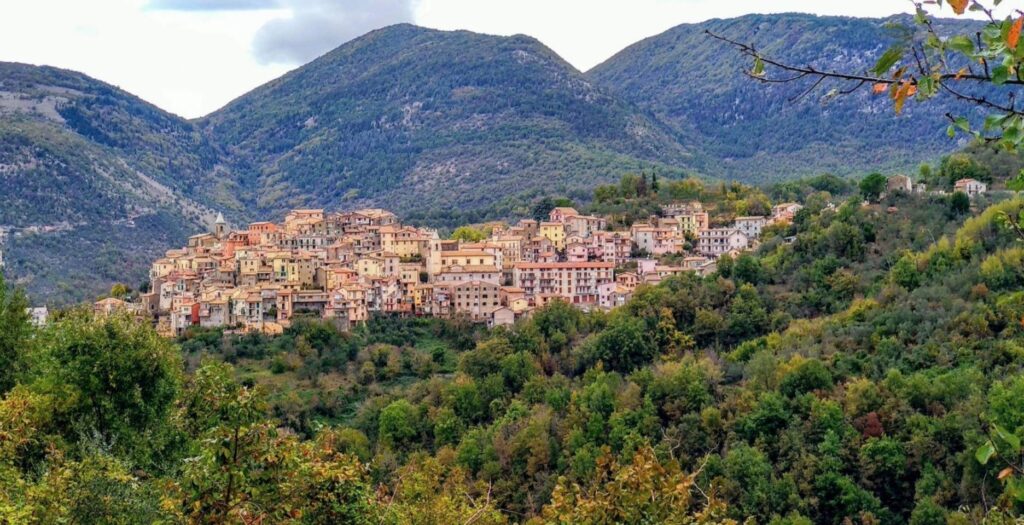
Gerano – foto Facebook @ Comune di Gerano
Walks in the Monti Lucretili Natural Park among the enchanting nature trails through chestnut groves and the Giovenzano valley.
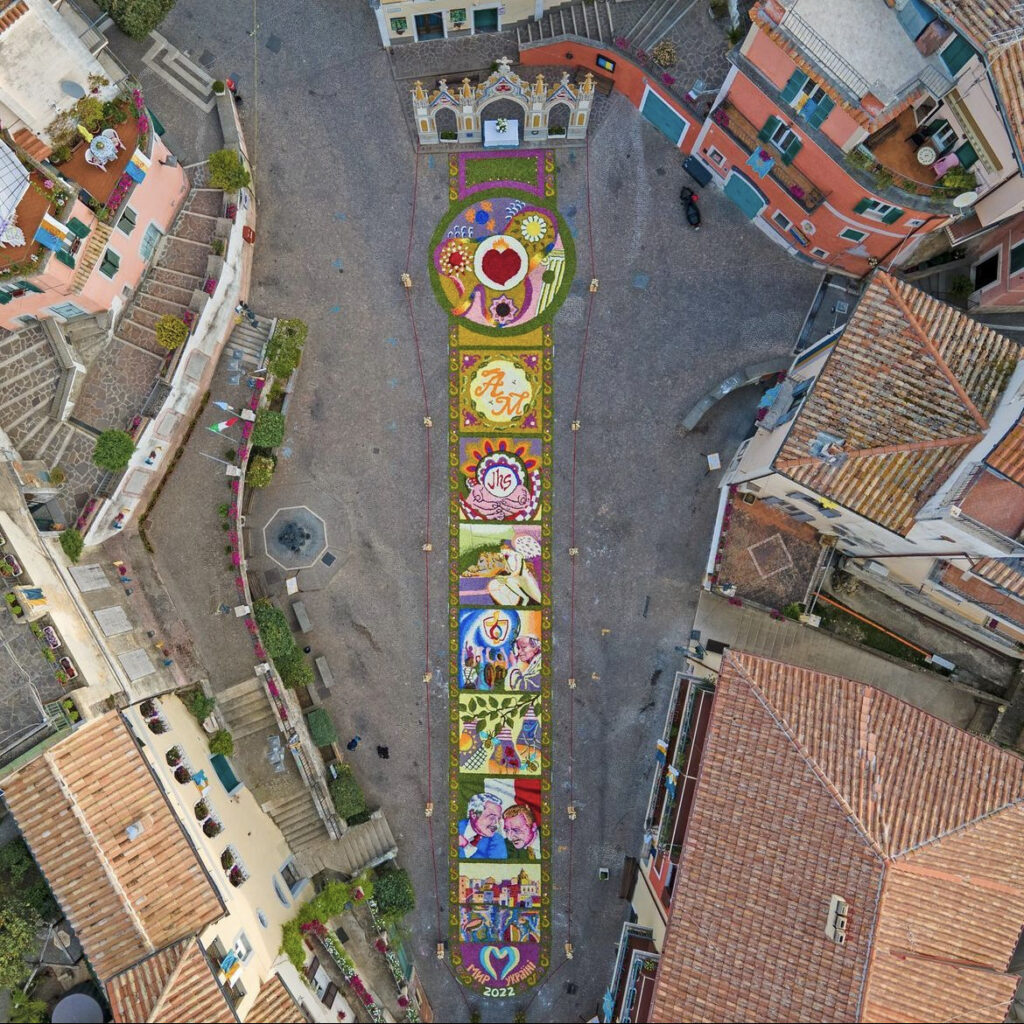
Infiorata di Gerano
Since 1740, the oldest infiorata in Italy has been held in Gerano on the first Sunday after St Mark’s Day (25 April).
What is so special about this infiorata that it is a candidate for UNESCO Intangible Heritage status? The Infiorata di Gerano has never been suspended, not even during periods of war or other dramatic events. Moreover, the Master Florists draw the motifs to be depicted directly with chalk on the ground and use only flower petals and leaves, without coloured earth.
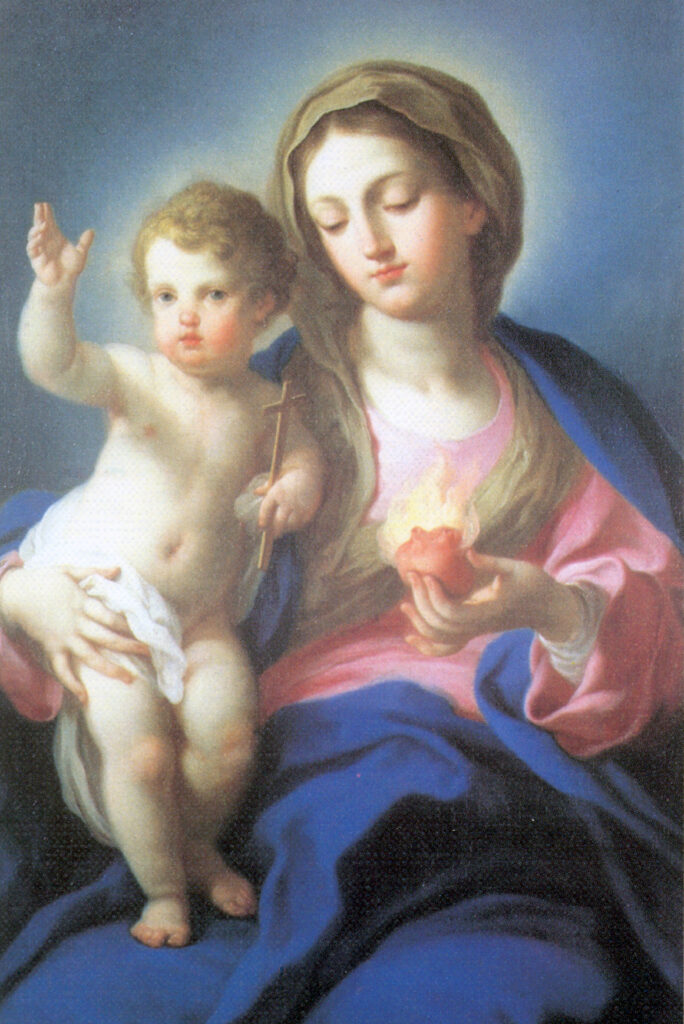
Madonna del cuore of Sebastiano Conca
The colourful floral carpet is created on the occasion of the traditional event linked to the devotion to Our Lady of the Heart. The painting of Our Lady of the Heart is an 18th century work by Sebastiano Conca and was brought to Gerano by two Jesuits in 1729. The people of Gerano became so fond of the image that they begged the two religious men not to take it away any more. It is said that the Jesuits did not want to know and, every time they tried to leave the village with the painting, it started to rain. The devotees interpreted this as a sign of Our Lady’s wish to remain in Gerano. And so it was.
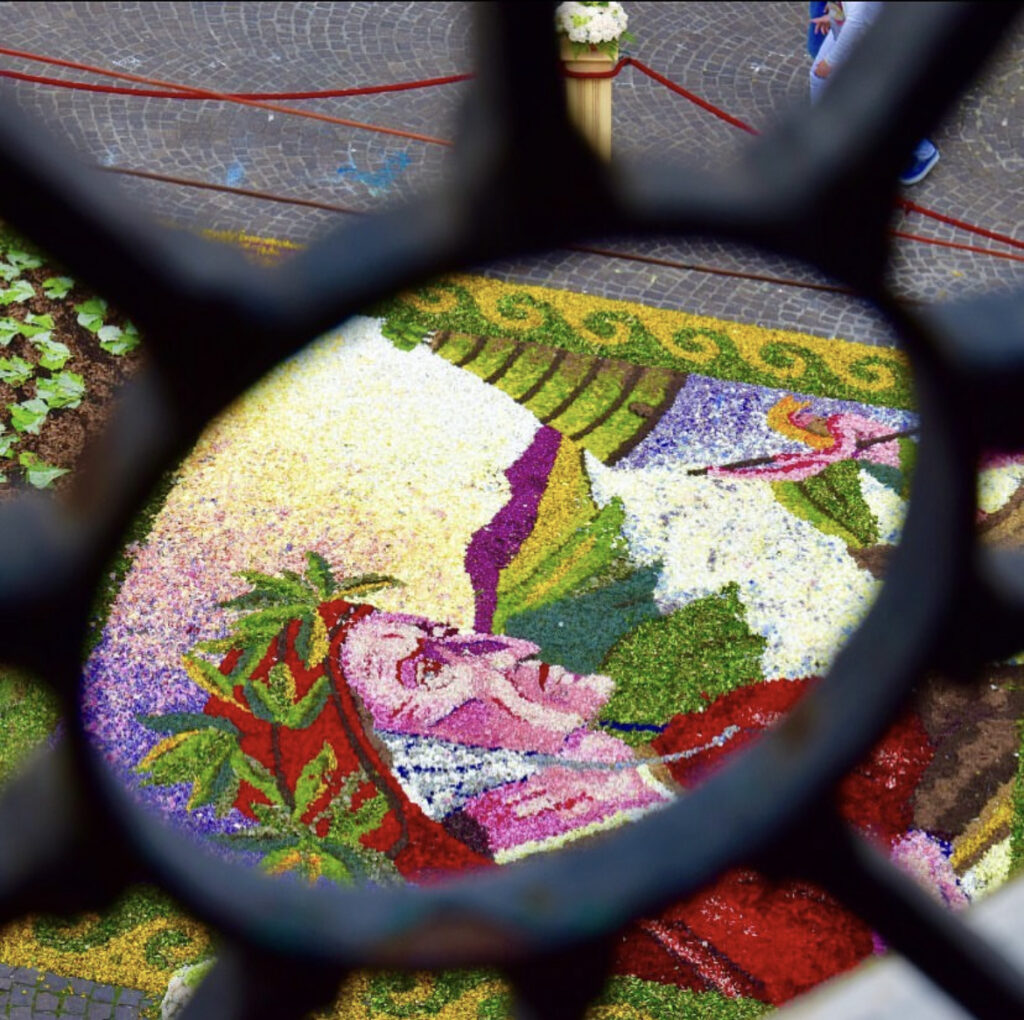
Infiorata di Gerano – Dante Alighieri 2015
On the eve of the Infiorata in Gerano, the protagonists meet in the cellar to create the paintings, experimenting with new techniques to create nuances and colour combinations with the chosen flowers.
On Saturday, one can watch the ‘Calata’ of the image of the Madonna del Cuore, removed from the wall of the church of Santa Maria Assunta. Sunday’s procession with the passing of the picture of Our Lady of the Heart on a bed of flowers, supported by the members of the Confraternity, is evocative. Once the procession is over, the children dismantle the flower carpet with the traditional ‘Sciarrata’. Then, it’s off to the sparkling fireworks display that brings the celebrations to an end.
The Museo dell’Infiorata is the identity memory of this community. It collects documents and ancient tools used in the ancient craft of the Master Florists. Here one can also read a little bit of regret in the tales of times past when the brethren dedicated themselves to collecting petals and leaves of broom, wisteria, ‘snowballs’, boxwood, holm oak, olive and sorghum.
